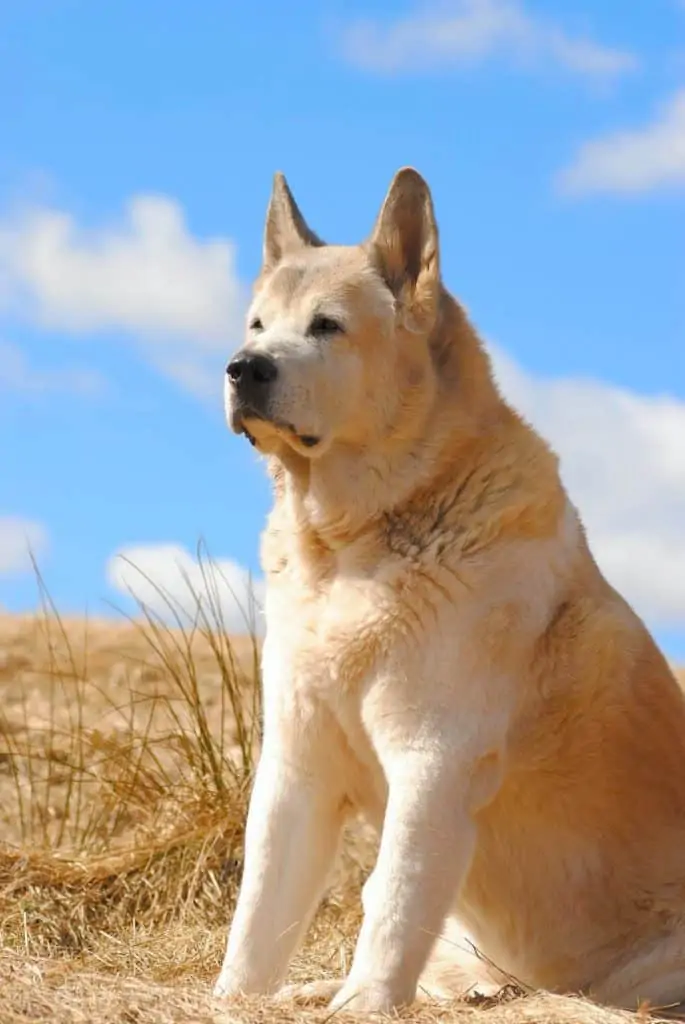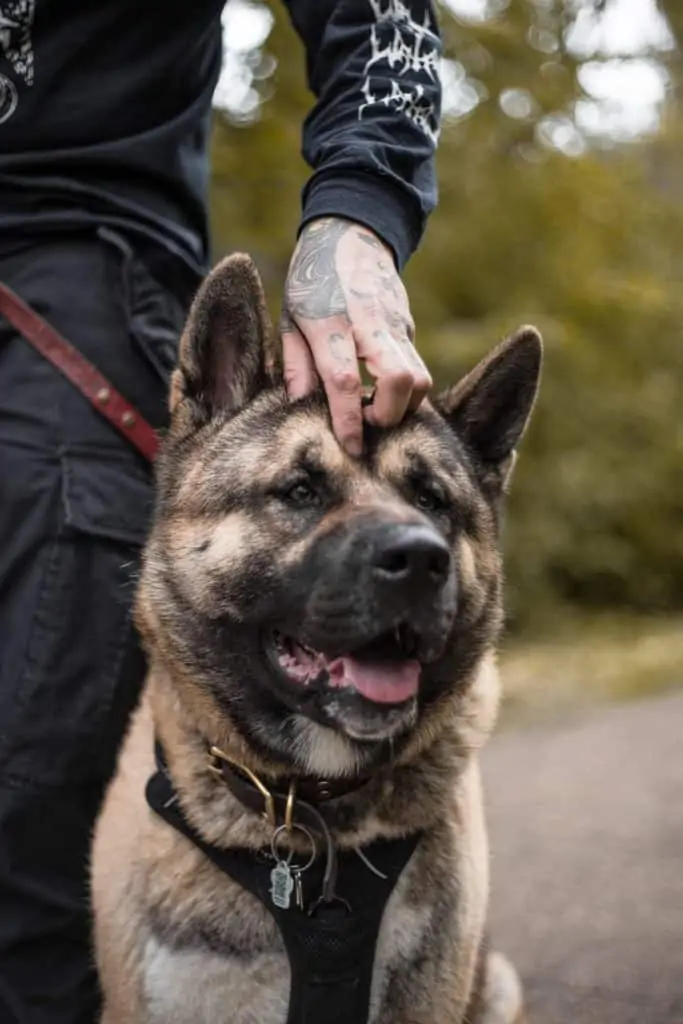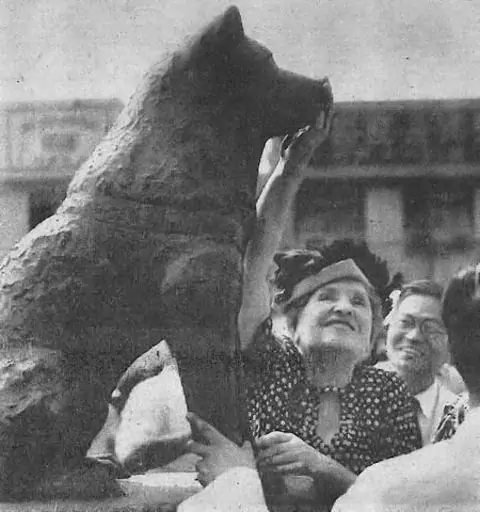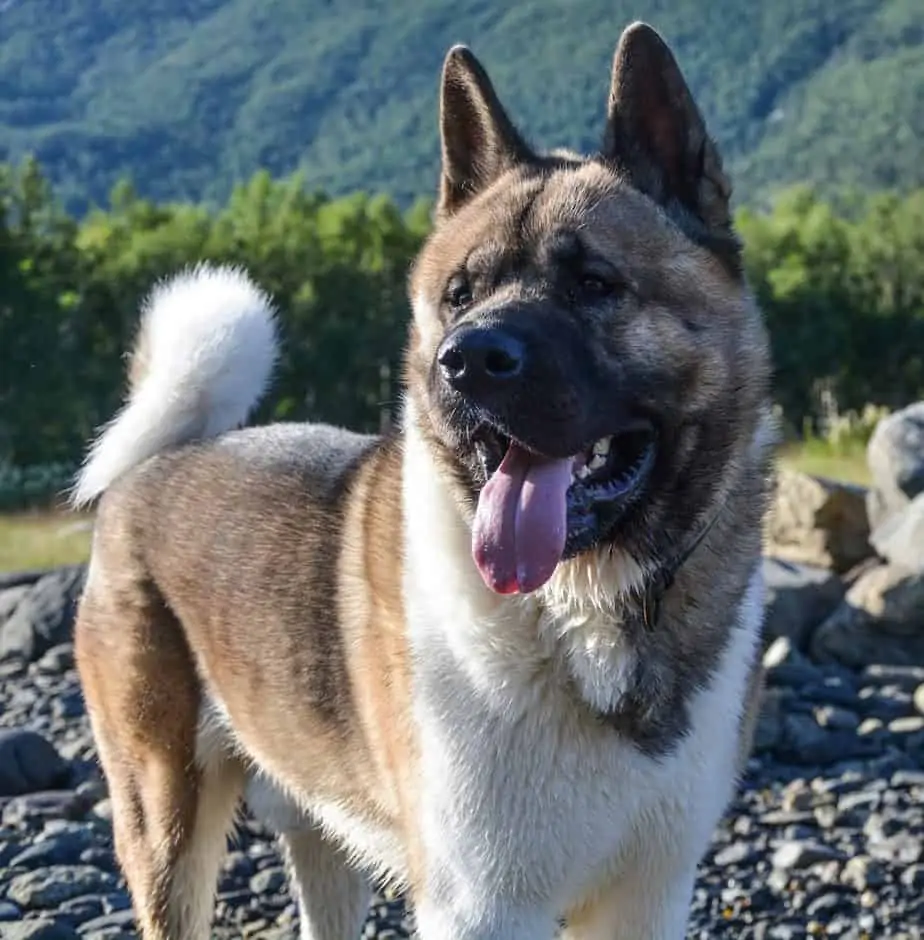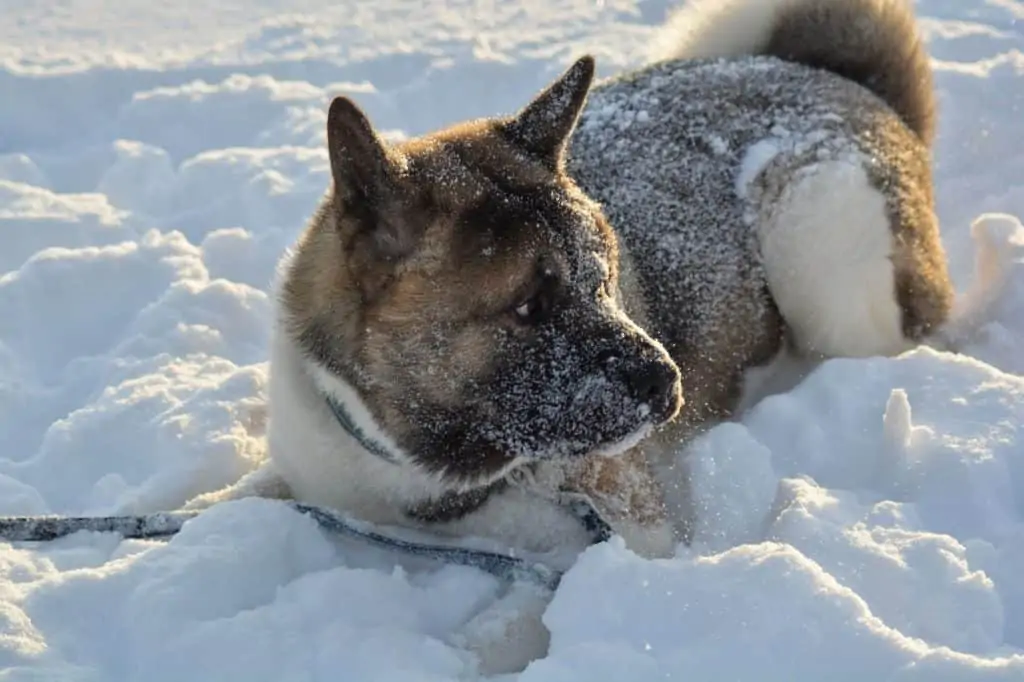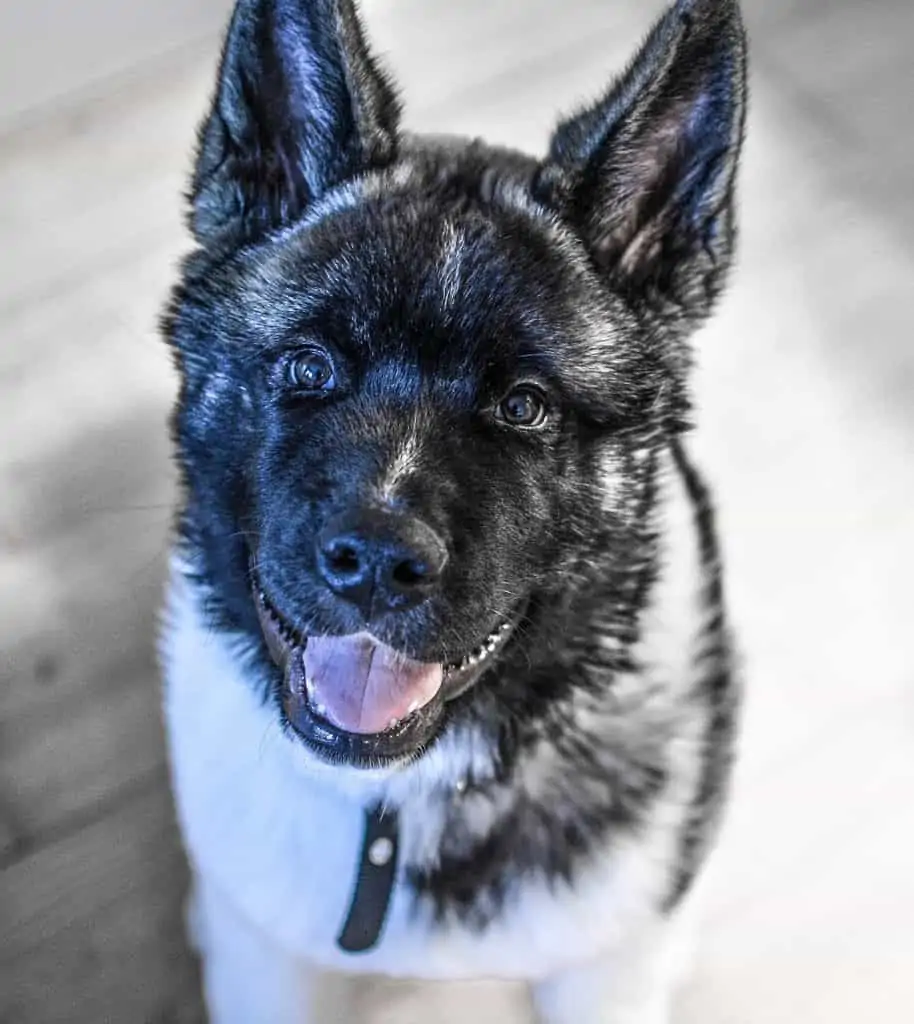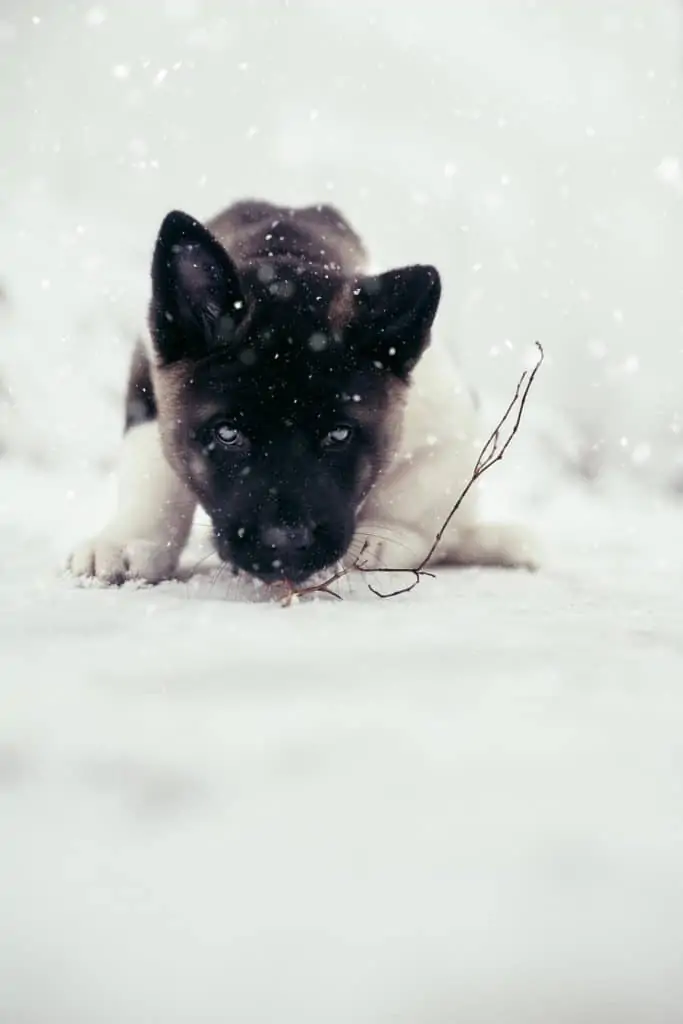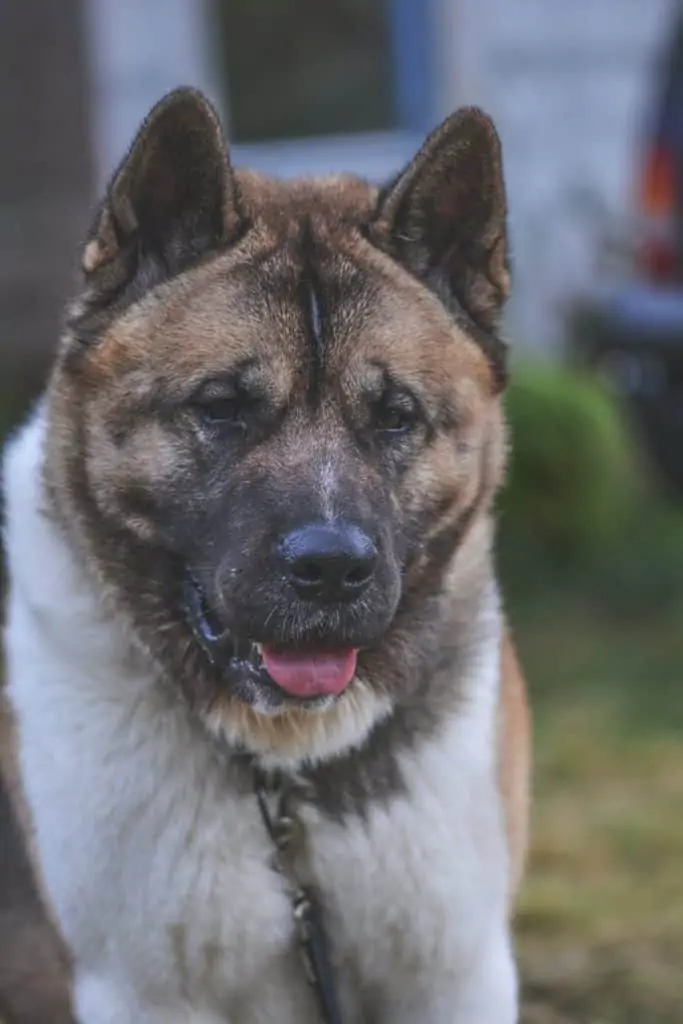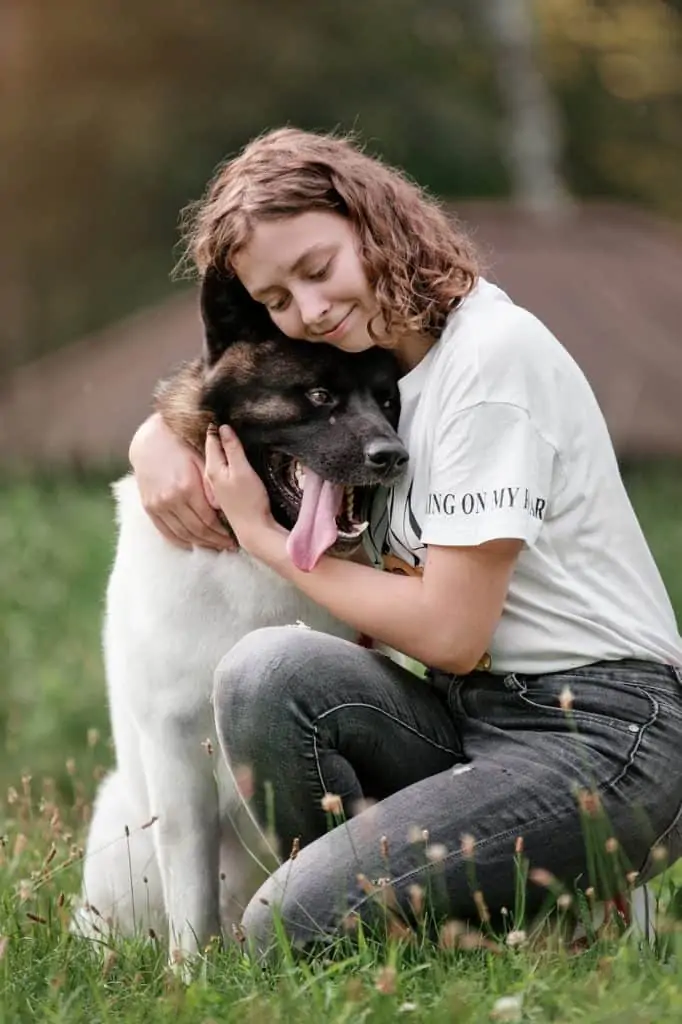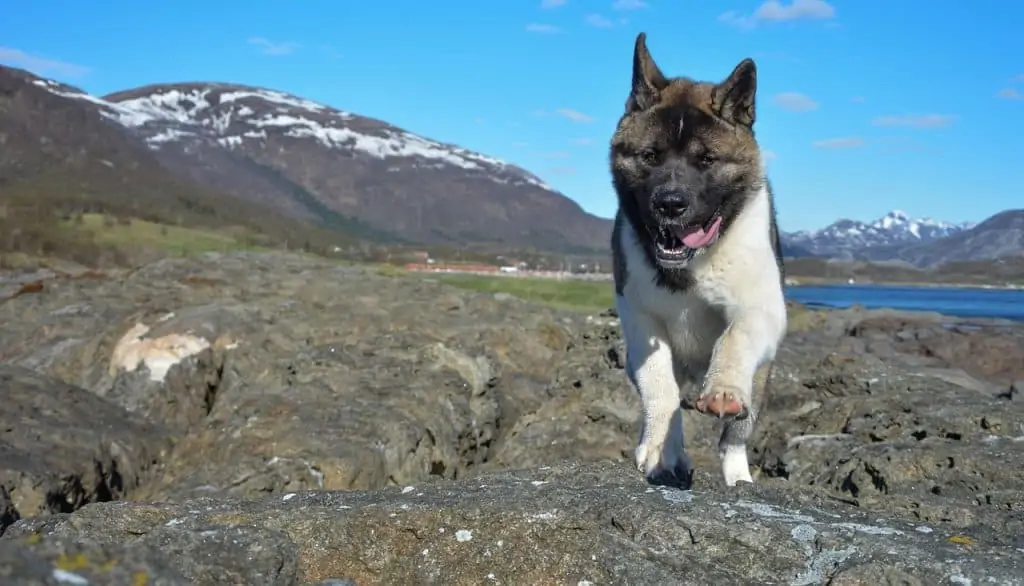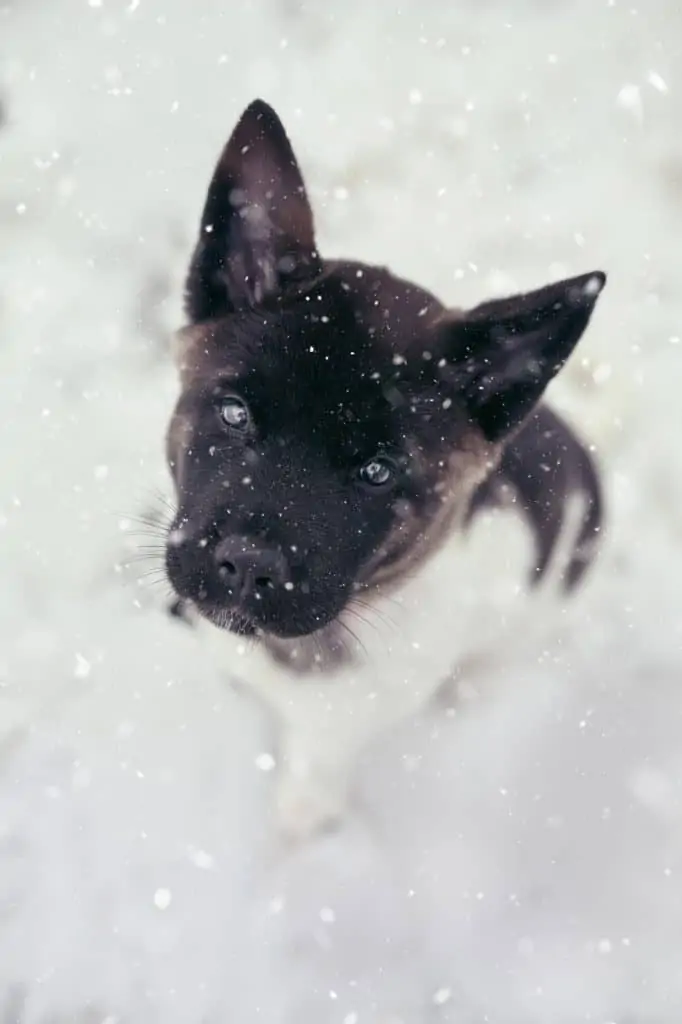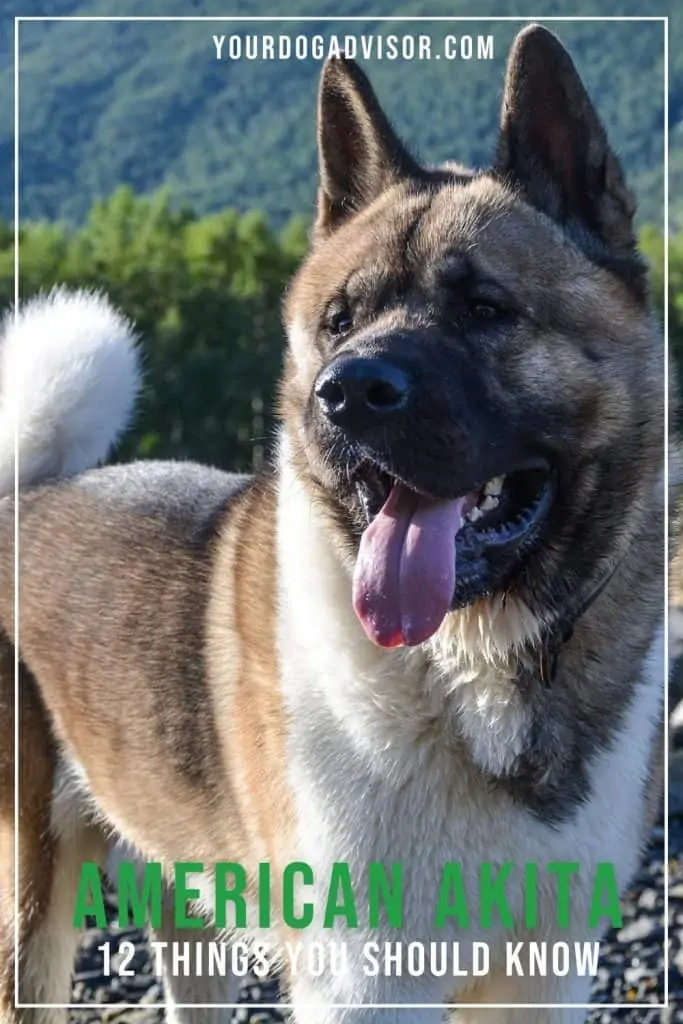The American Akita is a unique breed with a fascinating origin. Carefully developed over generations and bred to perfection, this is a dog that is known to turn heads, stir controversy and woo anyone looking for a bear-like companion to call their own.
Of course, like all dogs, the American Akita is not the ideal dog for everyone. This purebred can have some serious guarding instincts and is even prone to aggressive tendencies if not well trained and socialized.
While we don’t recommend the American Akita to novice dog owners and most families, he could make the perfect pet for those who are knowledgeable of this breed’s past, ancestry, instinct, and unique needs.
Do you have what it takes to raise a happy, healthy American Akita? We’re discussing 12 things you should know before you commit.
But first, let’s take a closer look at the American Akita in our brief breed overview.
Contents
The American Akita – A Brief Breed Overview
American Akitas are the Americanized version of the Japanese Akita.
Height: 24 to 28 Inches
Weight: 65 to 115 Pounds
Lifespan: 10 to 14 Years
Health Issues: Hip Dysplasia, Myasthenia Gravis, Von Willebrand’s Disease, Immune System Disorders, Skin Issues, progressive Retinal Atrophy, Bleeding Disorders, Gastric Dilation-Volvulus,
Temperament: Intelligent, Devoted, Willful, Imposing, Fearless
Best Suited For: Experienced Dog Owners
Overview:
The American Akita is closely related to the Japanese Akita, and there are even those who insist these two are one and the same. The American Kennel Club, for instance, does group the two together, though there are breed enthusiasts that point out that the American Akita is very different from his Japanese counterpart.
Bred and perfected primarily for size, the American Akita is a large-boned dog with bear-like structures. He has a dense, double coat that sheds profusely in the spring and fall during shedding season, and he is fastidious in his personal grooming habits.
Temperamentally, the American Akita can be quite challenging. This is a dog that has strong guarding and hunting instincts. He is known to be territorial and even aggressive if not properly trained and socialized.
However, a well-trained and socialized American Akita can be a true doggy gem. He gets along well with the children and other pets he is raised with and makes a devoted, loving, and protective canine companion.
Is the American Akita the right dog for you? Keep reading to find out.
1. The American Akita Is A Larger Version Of The Japanese Akita
Descendants of the Japanese Akita, American Akitas are large, imposing, and bear-like.
American Akitas did not officially exist until after World War ll when breed enthusiasts went about perfecting and breeding the original Japanese Akitas to be larger and more imposing.
The American Akita’s story begins in Japan when US servicemen were stationed there to serve as a part of the occupational force during the war.
These servicemen became familiar with the Akitas and were most drawn to the larger, more imposing Akita dogs than the smaller, more agile ones.
When these servicemen returned from Japan, many of them brought large Akita dogs with them. It was then that they began perfecting and carefully breeding these Akitas to ensure their size was maintained.
The Japanese, on the other hand, maintained the Akita’s natural breed standard. For quite some time, the American Akita and the Japanese Akita were considered one and the same, even though breeders in the US and Canada were working to ensure their specific dogs continued to be bred larger.
It wasn’t until 1972 when the Akita breed standard was approved, and the dog was moved to the working class in the American Kennel Club’s registry. Still, even then both the Japanese Akita and the American Akita were considered one and the same. This was due to the fact that Japanese Akitas was still being imported and registered by the American Kennel Club, and there was quite a bit of interbreeding going on.
In 1974, the American Kennel Club officially stopped registering Japanese imported Akitas, and this led to American Akita breeders having no choice but to continue to breed the larger, more imposing Akitas in the United States.
This led to Akitas developing their own distinct appearance, bloodline, temperament, and traits. Today, most breed enthusiasts do consider the American Akita and the Japanese Aktia to be different breeds, though there are still those that consider the Akita to simply be the Akita.
2. Helen Keller Is Credited With Introducing The First Akita Dogs To The US
Helen Keller is seen here visiting the statue of the famous Hachiko in Japan.
Although it would be years before American Akitas distinguished themselves from Japanese Akitas, it is believed that Helen Keller was the first to introduce Akitas to the United States as a breed.
Hellen Keller had visited Japan and was gifted two Akitas by the Japanese government. In the image above, you can see an aging Helen Keller touching a statue of Hachiko in Japan. Hachiko is the famous Aktia that many feel helped to put the breed on the map worldwide.
Hachiko was a devoted Akita dog that walked his owner to and from the train station every day for work. When his owner unexpectedly died at work, Hachiko remained at the train station. He waited more than nine years for his master to return in spite of the efforts of many attempting to adopt him or care for him themselves.
The devotion of Hachkio the Akita has been memorialized in statues, like the one pictured above, as well as in novels, documentaries, and even movies.
Today, the incredible devotion of the Akita is one of his most famous and distinctive traits.
3. American Akitas Nearly Went Extinct In WWll
Though the American Akita’s journey began because of WWll, it also nearly ended there as well.
Although American Akitas first began making their mark during World War ll, they also nearly didn’t survive it. During the war, strict rationing meat that many people who had Akitas could not afford to feed their dogs,
It was at this time the breed faced serious decline, and we nearly lost the gorgeous American Akita before it had solidified its name.
Luckily, when the war ended, breed enthusiasts continued their efforts to maintain the dog and continued breeding the larger, more imposing Akita dogs.
Interestingly, and in spite of being called an American Akita, the first American Akita on record was not American at all. In fact, the dog was a Canadian-bred dog.
4. American Akitas Are Bred Guard Dogs And Companions
Exercise and mental stimulation are key to ensuring your American Akita is healthy and happy.
Akitas in general were bred for guarding, hunting and companionship. These characteristics were instilled deeply in the breed, so much so that even if an American Akita of today is raised simply as a companion, he may not be able to stifle his prey drive and protective nature.
This could be problematic for novice dog owners, as an Akita without proper training and socializing could very well be a disaster and even considered dangerous in the wrong hands.
Many American Akitas are naturally suspicious of strangers and may not allow those they don’t know to approach their family or territory. However, with proper training and socalizioan, an American Akita should allow non-threatening strangers to pass and is known to be very well-disciplined.
Still, the American Akita’s prey drive could prove problematic for some. This is a breed that instinctually chases after small animals. This could include smaller pets like small dogs and cats. Even if they are not trained to hunt, they will still have this instinct.
American Akitas need routine exercise each and every day, including long walks morning and night. Without proper exercise, Akitas can become bored, depressed, and unhealthy.
When you’re walking your Akita outside of your home, it will be very important to keep his prey drive in mind and to ensure you are walking your dog on a proper leash and harness.
2 Hounds Freedom Dog Harness
No products found.
We recommend the Freedom Dog Harness above because it clips both in front and back, allowing the owner to have the utmost control over their dog while on outings.
This harness also helps to make walking feel more natural for your American Akita while reducing a good amount of heavy pulling.
Front clip harnesses like the Freedom Harness work well when you are leash training your dog, especially when utilized with treats, praise, and positive reinforcement.
5. The American Akita Does Best In Homes With Large Backyards
American Akitas are energetic and need routine daily exercise.
Bred as enthusiastic working dogs, the American Akita is known to be energetic. He will do best in homes with large backyards where he can play or roam freely and is not the ideal dog for apartment living.
Because Akitas are naturally muscular and athletic, it will be very important to have a backyard that is securely fenced in. Make sure your Akita cannot jump the fence or dig his way out of it, and be sure to provide your Akita with plenty to do in the backyard so he does not become bored.
Large Breed KONG
No products found.
Chew toys can help keep intelligent and active dogs busy when outside, which can, in turn, help keep them from getting into trouble. While the American Akita is not particularly destructive, he is quite intelligent and will enjoy toys that help to keep him entertained.
A large breed KONG toy like the one above can be filled with treats, peanut butter, kibble or chews to help keep your dog engaged for long periods of time.
Your American Akita will also enjoy playing games of fetch, chase, and tug of war, as well as participating in homemade obstacle courses in your yard that include treats or toys as rewards.
6. American Akita Dogs Are Work-Oriented and Very Intelligent
The American Akita is a working dog and heart and enjoys having a job to do.
As we discussed above, the American Akita is considered a highly intelligent working breed at heart. This means that he could be prone to suffering from depression, anxiety, and other behavioral issues if his unique needs are not met.
Training your American Akita should begin early in puppyhood and continue on throughout his lifetime.
While these dogs are incredibly brainy, they are also known to be willful and somewhat stubborn. This could be frustrating for a novice or impatient dog owner, but it’s very important to train your American Akita using positive reinforcement training techniques that utilize treats and praise.
Avoid using aversive training techniques like punishment, fear, and scolding. These types of training techniques can have aversive effects on your American Akita and may even hinder the bond built between the two of you. More importantly, this type of training can lead to a higher increase of aggressive tendencies down the road, especially if your American Akita becomes fearful of you.
Just as the American Akita requires routine daily exercise to stay physically fit, he should also have daily mental exercise as well.
Mentally stimulating your dog goes beyond just basic training. This could include ensuring your dog has a job to do throughout the day that can help provide him with some purpose. You can also ensure you are offering your American Akita puzzle toys that help to challenge him and ensure he is not left alone for too many hours at a time during the day.
7. The American Akita Can Have Strong Guarding Instincts
American Akitas are beautiful and affectionate dogs, but they are not the ideal dog for everyone.
American Akitas were originally bred as guard dogs and protection dogs. Throughout history, they have been used for a number of hunting purposes as well. For this reason, they are likely to have very strong protective instincts and guarding tendencies.
While these traits make this breed a wonderful guard dog and devoted protector, it can also make him dangerous in the hands of an inexperienced dog owner.
The American Akita is going to require routine socialization throughout his life and beginning early in puppyhood to reduce aggressive tendencies.
Naturally, the American Akita may be wary of strangers, although a well-trained and socialized American Akita will not act on this weariness unless he feels threatened. An American Akita, like all dogs, that is not well trained and socialized could exhibit serious aggression towards people and other animals out of fear.
We should also remind you here that the American Akita has a high prey drive. While he can do well with other dogs he is raised with, he may not be the ideal dog for households with smaller pets like cats, small dogs, and other small animals like rodents or birds.
8. American Akitas Can Be Prone To Some Unique Health Issues
Though most are healthy, the American Akita can suffer from several genetic health issues.
The American Akita is a relatively healthy purebred dog, though he can suffer from genetic health issues that can be quite serious.
These health issues can be exasperated if you purchase your American Akita through an irresponsible source, or if your Akita is not living a healthy lifestyle.
With an average lifespan of 10 to 14 years, the American Akita can be prone to suffering from the following health problems:
- Hip Dysplasia
- Myasthenia Gravis
- Von Willebrand’s Disease
- Immune System Disorders
- Skin Issues
- progressive Retinal Atrophy
- Bleeding Disorders
- Gastric Dilation-Volvulus
The best way to combat potential health issues in your American Akita is to ensure you keep your dog on a healthy diet. We also suggest keeping up with routine vet visits, ensuring your dog is properly groomed, and that you have a dedicated exercise routine with your dog.
9. The American Akita Can Do Well With Children If He Is Raised With Them
American Akitas can make good family dogs for experienced and vigilant families.
Because American Akitas can exhibit some strong guarding instincts, and because this breed is also known to have a high prey drive, it is reasonable for many people to assume that this breed does not do well with families.
While we wouldn’t recommend the American Akita to average families and those with basic knowledge of dogs, we also would not deter more experienced dog owners and families from investing in this type of dog.
In fact, when properly raised, trained, and socialized, the American Akita can do well with children. They will make protective and devoted companions to youngsters and enjoy having children to play with.
With that being said, it’s always important to work with age-appropriate children on the proper ways to interact with any dog. We suggest teaching children basic canine body language and making sure children understand that dogs do not like being hugged, teased, picked on, or poked.
It is also imperative that parents or guardians never leave small children alone or unsupervised around dogs at any time.
We should note that male American Akitas can be especially territorial, and these dogs are known to exhibit territorial and aggressive behaviors towards other dogs.
You can reduce these behaviors by ensuring your American Akita is properly raised, trained, and socialized at an early age. If you do want to raise your American Akita with other dogs, we suggest raising the two together starting in puppyhood.
You can also help curb problematic behaviors by ensuring your American Akita is spayed or neutered.
If you are raising an American Akita in a multi-dog household, we suggest considering crate training your dogs while you are away. This can help ensure no fights break out while you are not home and that all dogs in your household are safe and healthy.
10. Grooming An American Akita Is Not As Time Consuming As You May Think
Though they are shedding dogs, they do have self-cleaning coats.
One of the American Akita’s defining traits is his dense, double coat. This coat that makes him resemble a soft and cuddly bear could also be seen as a time-consuming grooming project for anyone who understands the commitments one must undertake with double-coated dog breeds.
However, the American Akita is a unique dog in that he is considered fastidious in his grooming habits. In fact, this breed is often compared to felines in the way he routinely grooms himself every day.
The American Akita’s coat is also weather-resistant, which means it is relatively self-cleaning. He only needs a bath once every six weeks or so unless he gets particularly dirty, and in fact, over-bathing him could actually harm his coat by stripping his skin of the natural oils it produces that help to ensure his skin and coat are healthy.
When you are bathing your American Akita, we recommend using a quality dog shampoo specified for canine use.
We should note that the American Akita is a shedding dog that sheds heavily year-round, so he may not be the ideal dog for those who suffer from allergies. He also sheds heaviest twice a year during shedding season in spring and fall.
Throughout the year, and especially during shedding season, the American Akita will need to be routinely brushed using an undercoat rake and a deshedding comb. This will help combat loose hair and remove any debris or dirt that compiles in your dog’s coat.
The Furminator Deshedding Tool
No products found.
When it comes to an ideal deshedding tool and undercoat rake for a dog like the American Akita, we would recommend the Furminator Deshedding Tool. This product is a quality-made deshedding tool that includes a self-cleaning button you can press that releases the hair automatically so you can continue brushing.
Not only does this brush help save you time, but it also helps remove the hair from the undercoat all the way to the surface, ensuring your dog’s skin and coat remain healthy and helping to reduce the buildup of debris and doggy odor.
Along with routine brushing and occasional bathing, American Akita dogs should have their teeth brushed daily and their ears kept clean and free of debris, waxy buildup, or moisture.
Last, like all active dogs, the American Akita should have his nails trimmed or ground down routinely to ensure they don’t crack or split during play or exercise.
11. The American Akita Is Best For More Experienced Dog Owners
The American Akita has several unique needs that are best suited for an experienced dog owner.
Based on what we have learned now about the American Akita, it should come as no surprise to you that this is a dog that is best suited for more experienced dog owners.
An ideal owner for an American Akita will be an owner with a strong understanding of working dogs and an owner who has had experience with dogs who could exhibit strong guarding instincts and a high prey drive.
This owner should also be patient, committed, and have a flexible schedule.
Remember, the American Akita is a large dog breed and he could be prone to willful behaviors. He is also quite energetic, which means he is best suited for homes with securely fenced back yards and active owners willing and able to exercise their dog on a routine basis.
While American Akitas can get along well with children and other dogs they are raised with, they are not the recommended dog for families with very young children or children that could be prone to playing too roughly with the family dog.
12. American Akita Puppy Costs Between $600 to $2,000
Puppies from breeders can cost a pretty penny.
Have you decided that the American Akita is the right dog for you? If so, prepare to fork over a good amount of money for this magnificent dog breed. Though not especially popular, American Akitas are highly sought after by many enthusiasts, and finding reputable breeders for this dog means you will need to spend more than you might usually for a dog of this caliber.
On average, the American Akita puppy through a reputable breeder is going to cost you between $600 and $2,000.
This price can vary based on your location and whether or not your American Akita puppy’s parents are show or working quality. Show dogs and dogs bred for working purposes are often more costly than those bred specifically for companionship.
There are ways to save money when looking for an American Akita, but it’s essential you avoid cutting corners by going through backyard breeders, online sellers, or sellers who cannot provide you with proper paperwork proving your puppy has been screened and cleared of any serious health issues.
Reputable breeders should be able to reassure and even prove to you that you are investing in a dog that does not come from breeding stock known for genetic issues or behavioral problems. They should also be able to provide you with paperwork proving pedigree.
If you prefer to rescue your dog, we recommend looking into breed-specific shelters. Most shelters that specialize in Akita breeds should be able to answer most of your questions and even help unite you with an American Akita in need of a loving forever home.
Rescuing has several benefits, including price. On average, rescuing or adopting an American Akita is around $250 to $500, which is a fraction of what it can cost to go through a breeder.
Furthermore, when you rescue an American Akita, you are freeing up more space for dogs in need, and you can’t put a price on that.
So, what do you think about the American Akita now that you’ve learned so much about him? Would you consider investing in this beautiful purebred? Why or why not?
Share your thoughts with us in the comment section below.
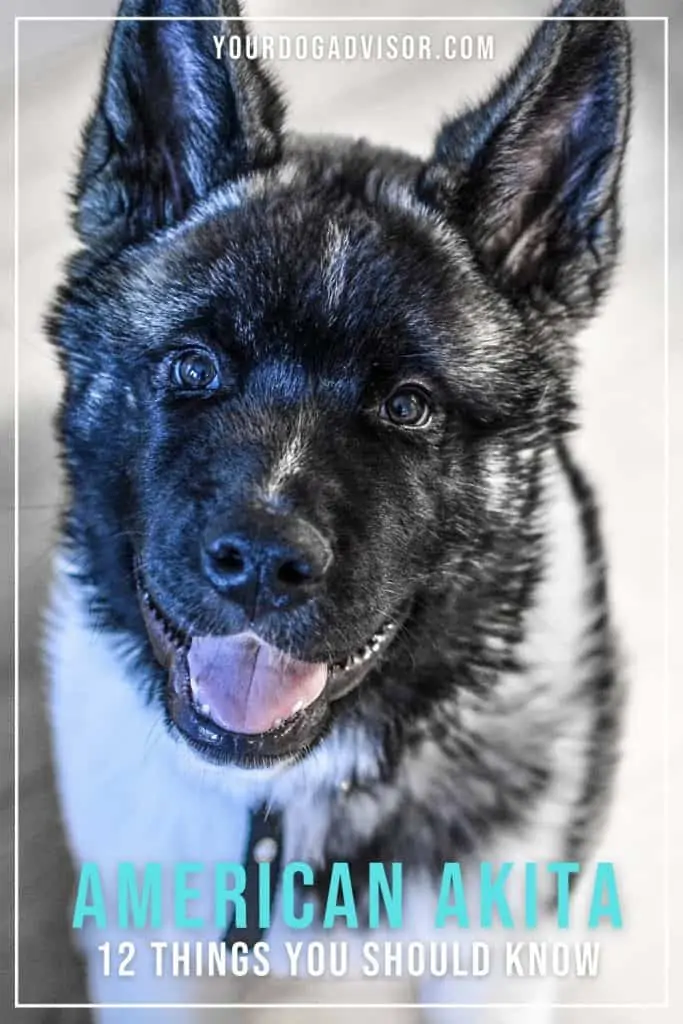

Jen Jones is a professional dog trainer and behavior specialist with more than 25 years of experience. As the founder of ‘Your Dog Advisor’ and the ‘Canine Connection’ rehabilitation center, she applies a holistic, empathetic approach, aiming to address root causes rather than merely treating symptoms.
Well known for her intuitive and compassionate approach, Jen adopts scientifically-proven, reward-based methods, encouraging positive reinforcement over punishment. Jen specializes in obedience training, behavior modification, and puppy socialization. Her innovative methods, particularly in addressing anxiety and aggression issues, have been widely recognized. Jen has worked with many of the world’s leading dog behaviorists and in her free time volunteers with local animal shelters and rescue groups.
